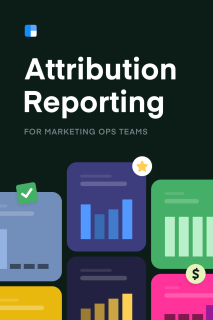Chapter 3
4 minutes
Types of attribution models
First-touch, last-touch, and multi-touch, oh my!
You’ve implemented hidden form fields, built a structured campaign hierarchy, and talked to stakeholders across the organization. It’s finally time to determine what type of marketing attribution model is right for your business, but how do you choose?
“There is no wrong answer,” shares Craig Jordan, Founder and CEO at SaaScend. It depends on your business needs and one model isn’t better than another. As we’ve discussed, finding data-driven insights that help you drive revenue is the most important part of building a marketing attribution model.
To illustrate how the various types of attribution models work, we will use the following example:
Gary the Growth Marketer signs up for a webinar through a paid LinkedIn ad, then downloads content from an organic search, and finally, registers for an event from an email invite before converting.
Standard models
First-touch, last-touch, and even distribution models are great ways to start your attribution journey. They are easier to set up (relative to a time-decay model, for example) but still provide valuable insights.
First-touch
First-touch attribution gives full credit to the first interaction in a prospect’s journey before conversion. In the above example, Gary’s conversion would be attributed to the webinar program and marketing channel of paid LinkedIn.
While a first-touch attribution model may be the right choice for businesses focused on top-of-the-funnel efforts, it can be overly simplistic and miss key milestones in the buyer journey. B2B SaaS organizations often have long sales cycles, so a prospect’s first touchpoint with the company may not be representative of what led them to convert. For example, if Gary signed up for the webinar a year before converting, that’s not indicative of what led to the conversion.
To account for lengthy sales cycles, you can implement a lookback window of your choice, usually 30 to 90 days. This lookbook window means when a prospect converts, the credit will only be given to the first touch within the past 90 days, accounting for relevance and recency.
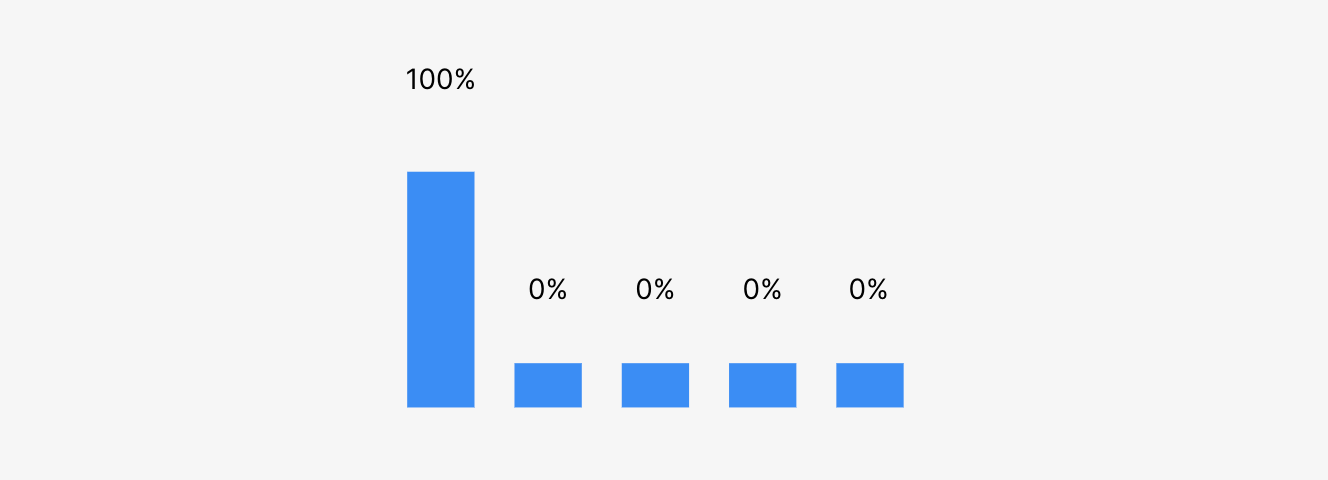
Last-touch
Last-touch attribution tracks the last touchpoint before conversion. Using the same example above, Gary’s conversion would be attributed to the event, and email would be credited as the marketing channel.
Clearbit uses a last-touch attribution model for multiple stages in the funnel – jump to chapter 6 to learn more. Last-touch attribution is less complex to set up than other model types like U-shaped, for example, but it still requires piecing together data and systems. Much like first-touch, last-touch also does not account for the entire buyer journey, which may be challenging for companies with lengthy sales cycles.
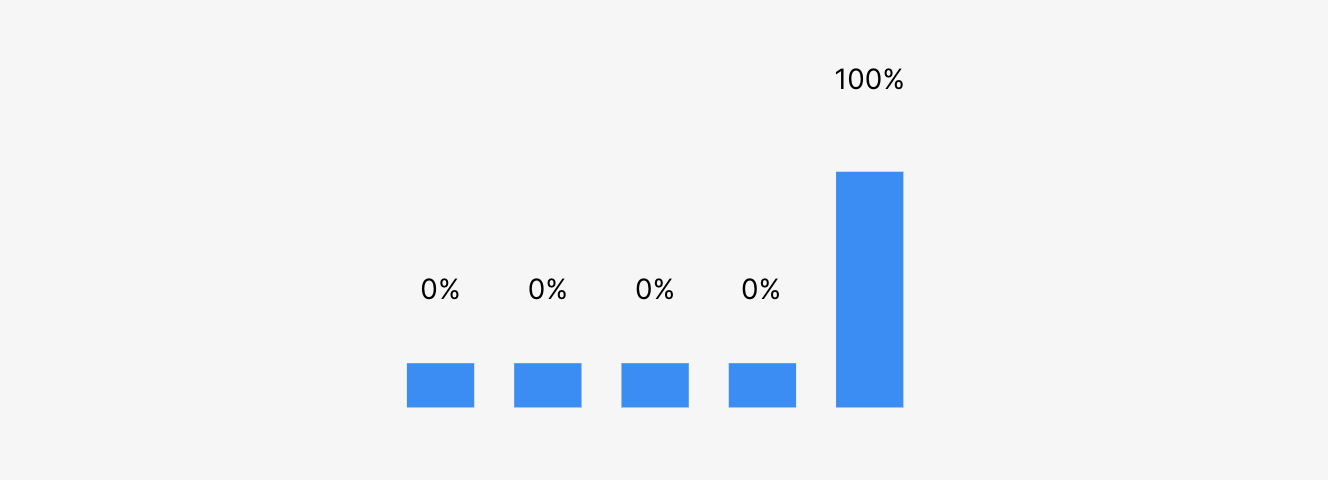
Even distribution
Last up in the standard models family is even distribution, a fairly self-explanatory model. It gives equal credit to each touchpoint in the customer journey. In the above example, credit would be split between the webinar, content, and event programs and paid LinkedIn, organic search, and email.
Since even distribution includes a variety of touchpoints, it is more representative of the broader buyer journey. However, it has its limitations because not every touchpoint should always be weighted equally.

Custom models
Custom models are extremely powerful, but as you would expect, they are more complicated to operationalize. In many cases, fancy doesn’t always mean better.
If a standard model works for your business needs, that’s great. If you need something more robust, that’s fine, too. Find what gives you insights to drive more revenue.
U-shaped & W-shaped
U-shaped attribution gives the majority of the credit to the first and last touch and then even credit to the touchpoints in between. In a W-shaped attribution model, the first, middle, and last touch receive the largest amount of credit, with the rest of the touchpoints sharing the credit. These models are much more complex to set up and often overcomplicate attribution. If you have a marketing funnel with many interaction points, a U or W-shaped attribution model may be helpful, but for most organizations, these models are not necessary.
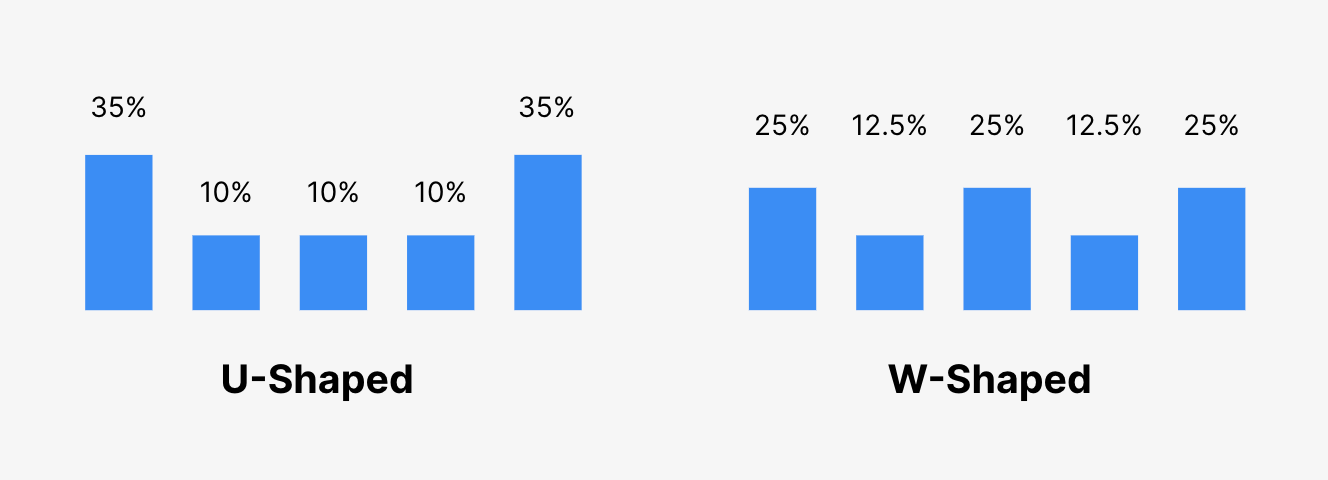
Time decay
A time decay-based attribution model places more weight on activities done closer to the point of conversion. In the above example, the webinar would receive the smallest weight and the event would receive the greatest weight. This model helps account for lengthy sales cycles by giving a larger percentage of credit to more recent, and therefore, often more relevant, interactions. Envoy uses a time decay attribution model – jump to chapter 6 to learn more.
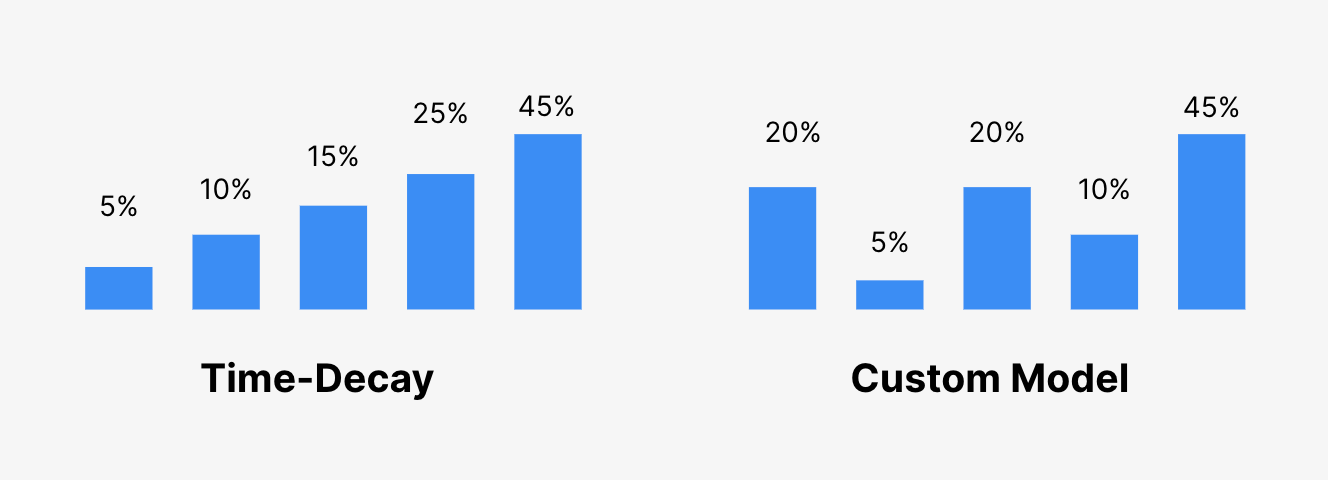
Regardless of what model you choose, ensure it provides you with the insights you need to drive the business forward. Remember, Rome wasn’t built in a day. It takes time to lay the foundation, gather inputs, and operationalize your attribution model.
Watch our recent webinar for a deep dive into the different types of attribution models.
